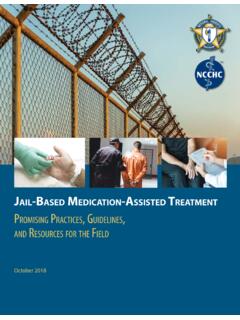Transcription of Online 'Predators' and Their Victims
1 Online Predators and Their VictimsMyths, Realities, and Implications for Prevention and TreatmentJanis Wolak, David Finkelhor, and Kimberly J. MitchellUniversity of New HampshireMichele L. YbarraInternet Solutions for Kids, publicity about Online predators who prey on naivechildren using trickery and violence is largely sex crimes involving adults and juveniles moreoften fit a model of statutory rape adult offenders whomeet, develop relationships with, and openly seduce under-age teenagers than a model of forcible sexual assault orpedophilic child molesting.
2 This is a serious problem, butone that requires approaches different from those in cur-rent prevention messages emphasizing parental controland the dangers of divulging personal information. Devel-opmentally appropriate prevention strategies that targetyouths directly and acknowledge normal adolescent inter-ests in romance and sex are needed. These should provideyounger adolescents with awareness and avoidance skillswhile educating older youths about the pitfalls of sexualrelationships with adults and Their criminal nature. Partic-ular attention should be paid to higher risk youths, includ-ing those with histories of sexual abuse, sexual orientationconcerns, and patterns of off- and Online risk taking.
3 Men-tal health practitioners need information about the dynam-ics of this problem and the characteristics of Victims andoffenders because they are likely to encounter related is-sues in a variety of :Internet, adolescents, child sexual abuse, statu-tory rape, sexual offendingThe Internet is becoming an increasingly dangerous place for chil-dren and teenagers whose Online profiles often attract aggressivesexual predators, federal prosecutors said Friday. The Depart-ment of Justice has joined with nonprofit groups to promote [a]public service campaign.
4 Which warns that personal informationposted Online can lead to abductions and sexual exploitation ofchildren. Pedophiles are finding new ways and new opportunities tonetwork with each other on how to exploit children, said [a] .. at a news conference where federal agents warned thatseemingly friendly Web sites like MySpace or Facebook often areused by sexual predators as victim directories. Young girls who areinnocently posting very personal information, or Their identities, onthese sites are setting themselves up for disaster, [he] said. (Filosa,2007, 1 4)Media stories about Online predators who usethe Internet to gain access to young victimshave become a staple of news reports since thelate 1990s, when youth Internet use became of the publicity about these cases depicts onlinemolesters who use the Internet to lure children into sexualassaults ( , Blustein, 2007; Boss, 2007; Crimaldi, 2007;Kelly, 2005; Lowery, 2007).
5 In the stereotypical mediaportrayal, these Online child molesters lurk in Internetvenues popular with children and adolescents ( ,Apuzzo, 2006; Gintz, 2007). They use information publiclydivulged in Online profiles and social networking sites toidentify potential targets ( , Medina, 2007; Rawe, 2006;Schrobsdorff, 2006). They contact Victims , using deceptionto cover up Their ages and sexual intentions ( , Crimaldi,2007). Then they entice unknowing Victims into meetingsor stalk and abduct them ( , Filosa, 2007; Minaya, 2006;Rawe, 2006).
6 Some news reports have suggested that lawenforcement is facing an epidemic of these sex crimesperpetrated through a new medium by a new type ofcriminal ( , Bahney, 2006; Filosa, 2007; Manolatos,2007). Needless to say, these reports have raised fearsabout Internet use by children and adolescents and aboutthe safety of specific Online activities such as interactingonline with unknown people, posting profiles containingpictures and personal information, and maintaining Webpages at social networking reality about Internet-initiated sex crimes thosein which sex offenders meet juvenile Victims Online isJanis Wolak, David Finkelhor, and Kimberly J.
7 Mitchell, Crimes againstChildren Research Center and Family Research Laboratory, University ofNew Hampshire; Michele L. Ybarra, Internet Solutions for Kids, Inc.,Santa Ana, article is largely based on three research projects conductedby the authors at the Crimes against Children Research Center, Uni-versity of New Hampshire. The first Youth Internet Safety Survey wasfunded by the Congress through a grant to the National Center forMissing & Exploited Children. The National Juvenile Online Victim-ization Study and the second Youth Internet Safety Survey werefunded by the National Center for Missing & Exploited Children andthe Department of Justice, Office of Juvenile Justice and Delin-quency Prevention.
8 Program support for the preparation of this articlewas provided by the Verizon Foundation. Points of view or opinions inthis document are those of the authors and do not necessarily representthe official position or policies of the Department of Justice orother entities that provided to the members of the Family Violence Research Seminar ofthe Family Research Laboratory and the Crimes against Children Re-search Center at the University of New Hampshire for Their valuablecomments on an earlier version of this concerning this article should be addressed to JanisWolak.
9 Crimes against Children Research Center, University of NewHampshire, 10 West Edge Drive, Durham, NH 03824. E-mail: March 2008 American PsychologistCopyright 2008 by the American Psychological Association 0003-066X/08/$ 63, No. 2, 111 128 DOI: , more complex, and serious but less archetypicallyfrightening than the publicity about these crimes health practitioners need an accurate assessment ofthe nature and prevalence of Online child molestation be-cause they are likely to encounter related issues in a varietyof contexts. Psychologists who work with youths maycome across some who have been victimized or are indanger because of off- or Online sexual risk taking.
10 Psy-chologists who work in settings such as schools may haveto respond to the concerns of parents, teachers, and otheradults. In some cases, the publicity about Internet-initiatedsex crimes may engender exaggerated fears that need to bedealt with by providing accurate information. In othercases, knowledgeable advice about how to handle situa-tions in which youths are victimized, targeted, or at riskmay be required. In addition, some psychologists may findthemselves dealing with adults who are caught up in sex-ually compulsive Online behavior that may include poten-tial or actual illegal conduct with young people.












